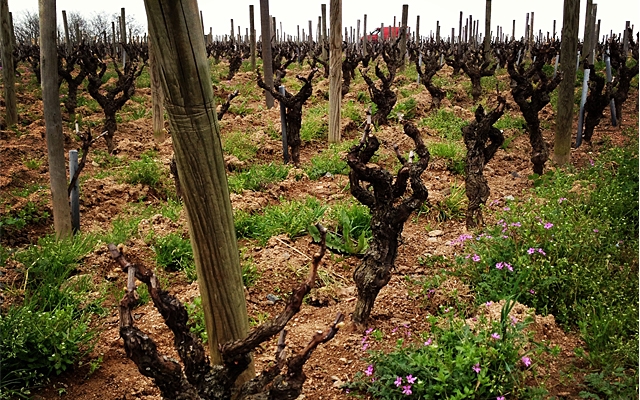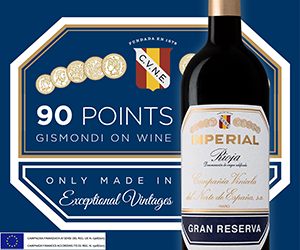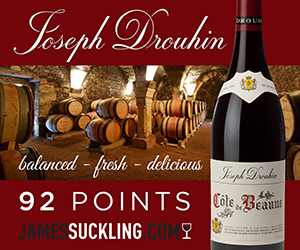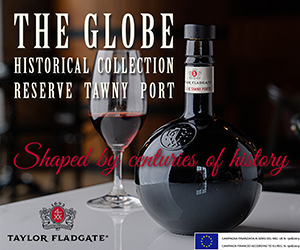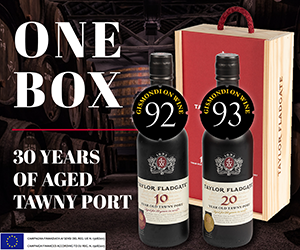This Thursday, Beaujolais Nouveau est arrivée.
This Thursday, Beaujolais Nouveau est arrivée. This unique annual event, falling on the third Thursday in November, is when baby-fresh Beaujolais is officially launched and sold worldwide. Nouveau is a youthful wine. It’s speedily made from gamay grapes harvested just weeks prior, barely through carbonic fermentation in stainless steel before being bottled and expedited by air to markets everywhere.
Nouveau is a marvel not replicated. Yes – in many winemaking regions vintners will celebrate the harvest and toast the workers with a splash of wine made from the just-passed harvest. But the Beaujolais took it much bigger than their local village. In the 1970’s, mega negociant, the self-proclaimed “King of Beaujolais”, Georges Duboeuf expanded the market for his just-finished wines to the rest of France, and coined the term Nouveau (new). Beaujolais Nouveau was a massive success, with international markets clamoring to get a taste of this year’s harvest (Duboeuf’s colourful abstract label designs helped too).
In America it was touted as the perfect Thanksgiving wine – the timing is incredible, non? The light, fruity, candied, low tannin red was easy-drinking, not complicated, and relatively inexpensive – all tempting for a maturing wine audience. The USA remains the largest export market today, and Nouveau celebrations still remain a popular event in Japan and Germany, followed by the USA. The popularity led the market to become saturated with Nouveau, and store shelves remained stocked long past Thanksgiving.
The whole point of this wine is to drink it young and as fresh as possible – it was certainly never intended, nor built for aging. And as with any trend, it becomes passé at some point. For Nouveau, the bust came in the late 1990s, and the Beaujolais region as a whole continues to struggle today because of this. Following the 2001 vintage, over 1.1 million cases of Beaujolais wine (most of it Beaujolais Nouveau) had to be destroyed or distilled due to lackluster sales due to consumer backlash against the popularity of Beaujolais Nouveau.
Important French wine critic François Mauss claimed that the reason for the backlash was the poor quality of Beaujolais Nouveau that had flooded the market in recent decades. He claimed that Beaujolais producers had long ignored the warning signs that such a backlash was coming and continued to produce what Mauss termed vin de merde (shit wine). This tipping point swept wine drinkers into a frenzy and triggered an outcry among Beaujolais producers, a verve that continues to build, even today.
No Longer Nouveau
When you're in Beaujolais, there is always much discussion about advancing Beaujolais’ image far beyond Nouveau. Collectives of quality-driven winemakers have banded for strength in numbers, and small producers that used to sell to the large négociants and mega-brands are working together to get the word out about well-crafted, site-singular, terroir-driven Beaujolais. #GoGamayGo.
Groups of growers are now controlling their own image, marketing and representation. Indeed, Nouveau is just one slice of the Bojo pie, and one that quality driven producers would like to see slivered down further. There are approximately 20,000 hectares split into nearly 60,000 plots in Beaujolais, the wine region resting at the heel end, and in the shadow, of Burgundy, due north from the city of Lyon.
Beaujolais is actually part of Burgundy, a fact that even many wine lovers are unaware of. Hundreds of years ago, when monks created highly detailed studies of climats and mapped the terroirs, Beaujolais was documented right along with Burgundy, with more than 100 different climats recognized through the regions. However, in the 1930’s, the INAO officially recognized the climats of northern Burgundy, but not those of Beaujolais. There is a push today to create a classification system for Beaujolais, including naming Premier and Grand Cru sites, in a bold move to showcase and promote quality. A thorough geological study between 2010-2014 mapped in great detail the intricicies and boundaries of the varying soil types: granite, famously (gamay loves granite) but also a complexed mix of aspects, slopes and altitudes of silex, limestone, marne, clay and schist. These maps form the case for the 10 Cru to formally delineate special sites - climats - officially recognized, in the same way as Burgundy. Audrey Charton, president of the ODG des Crus du Beaujolais, plans to submit the data to authorities in June 2016, requesting official recognition of Premier Cru sites in the region.
Certainly Beaujolais needs to do something drastic: total sales were down 4.6% in 2012 over 2011, and 15.2 % from 2008, with the greatest decrease seen in higher-priced cru Beaujolais. For Beaujolais to survive into the future, the region's 2,500 farmers have to get more value for their grapes – and that means vintage wines, not low-priced Nouveau. This is where the “Next Beaujolais” is rising, with young, eager and studied winemakers buying up old domains and vineyards that are selling for very reasonable prices, and applying techniques and skills learned elsewhere, including Burgundy, to gamay wines. Dominique Piron, a well-known grower, has seen it all over 40 years in Beaujolais. He told me that in order for Beaujolais to move forward, it “Needs more criticial mass and young, motivated individuals. The region is missing people that believe in the whole philosophy of Beaujolais, and what it can become.”
The 12 Appellations
The entire vine growing area stretches out along 55km from north to south, and is 25 km wide east to west. There are 12 AOPs: Beaujolais, Beaujolais-Villages and the 10 Cru Beaujolais. You’ll notice that Beaujolais Nouveau isn’t an AOP; rather it’s a style of wine produced mainly from one of the 72 villages in the south and eastern part of the region. For Beaujolais-Villages, 38 special villages can append their name to Beaujolais, sites that might be located nearer to the preferred granite or schist soils, and producing wines deeper and darker in color. Beaujolais Rosé and Beaujolais Blanc (from chardonnay) is also able to be produced as part of these AOPs.
The 10 Cru Beaujolais read like a mnemonic poem to any wine student, memorized by rote, north to south. They are 10 villages producing wines of such distinction that they do not need to name ‘Beaujolais’ on the label. The wine from each Cru Beaujolais is distinct and unique even if the AOP’s clustered along the Saône River give way one to the next, along mainly granitic terrain.
The 10 Crus, from north to south follow my guide :
Should Julie Care My Flower Can Make Rain Bow Colours.
Saint-Amour
Lively, refined and balanced, this Cru of lovers is all ruby jeweled and kirsch scented, with fine perfumed spice.
88. Domaine des Billards Saint-Amour 2013 $26.49
Classic fruitiness of Saint-Amour here, with kirsch and wild blueberry supported by cool stony minerality. Acids are pomegranate tart and tannins are structured and quite grippy, the latter a result of a 15-25 day ferment with submerged crust. Bright and honestly rustic, finishing with fine white pepper and a lick of heat (though it's a coveted 12.5 percent alcohol). Pour alongside grilled mushrooms and poultry. TR
Juliénas
Named for Julius Caesar, robust and juicy, with ample red fruit, crimson peach, floral and spice.
Chénas
The smallest (rarest) of the Cru, generous and tender on the palate with floral and structured woody body.
90. Domaine Piron-Lameloise Chénas Quartz 2014 $29.99
Rock juice. That's what this wild ferment Chénas is like, living up to its Quartz name. Dominique Piron is the 14th generation winemaker at the family estate. Woodsy, spice notes open, with subtle earthy smoke, dark florals, wild black plum, black cherry, black raspberry laid across a textured stream bed of stones. Tannins are slightly grippy and acids are bright and shining through to a fine peppery finish. Quite structured, this would hold up to roasted pork tenderloin or grilled sausages. TR
90. Pascal Aufranc Vignes De 1939 Chénas 2011 $17.95
From gnarly old bush vines planted in 1939, on granite, comes this elegant and alluring nose of delicate flowers and pulsing granitic minerality. Lovely pure fruit throughout, with waves of textured floral notes and spice and still firm tannins to the fresh, tart finish. I'd cellar this for another five+ years, or open it a few hours (a day) before for maximum enjoyment now. Love the character in this wine. TR
89. Chateau Bonnet Chénas Vieilles Vignes 2013 $20.99
Light and floral, with fragrant raspberry and yellow plum aromas carrying through to the palate. An herbal note weaves throughout - a bit of peppery bitter stalkiness - along with cinnamon bark and dried florals. Fresh, juicy and youthful, with fine tannins and a lovely, dried-herb savoury notes. TR
Moulin-à-Vent
One of the more age-worthy Cru, powerfully structured thanks to granitic soils laced with manganese. Intense and tannic, with ample flowers, spice and ripe fruit.
92. Jean-Paul Brun Terres Dorées Moulin-à-Vent 2013 $26.49
The power of Moulin-à-Vent streams through in this wine, made by Beaujolais terroir legend Jean-Paul Brun. Gracefully structured, with wild raspberries, herbal rock rose aromas. Bamboo thin, grippy and firm tannins support more wild raspberry and strawberry and ample granitic minerality. Acids are precise and nimble, and the finish liberally white pepper and lingering. A beauty to drink now, but will reward with five more years in the cellar. TR
92. Dominique Piron Lameloise Moulin-à-Vent Vieilles Vignes 2011 $20.00
This wine is from one single tiny vineyard (1.5ha) in Moulin-à-Vent planted to 120 year old gamay vines. Dark damson aromas, with spice, iris and inky blackberries carrying through to the palate. Very interesting and alluring mineral and granite notes, alongside bright black cherry, perfumed violets and grippy, firm tannins. Depth of flavours here is impressive; the wine delivers its pedigree not overtly, but quietly. Impressive now, but will cellar for another five years easy. Not available in BC. TR
Fleurie
Velvety in texture and elegance with floral violets, rose, black currant notes. Often referred to as the most ‘feminine’ of the Cru.
Chiroubles
The highest perched of the crus, with juicy and refined red fruit, fragrant peony and lily.
91. Christophe Pacalet Chiroubles 2011 $29.50
Christophe Pacalet is the nephew of the revered biodynamic and naturalist wine pioneer Marcel Lapierre, and with advice and support from his uncle Marcel, he took a leap of faith in 1999 and opened his own boutique winery. He raises all his crus in neutral Burgundy barrels, employs minimal intervention and makes wines from various Beaujolais crus, expressing the distinct terroir. This aromatic Chiroubles is wild fermented using minimal sulfur and filtration. Beautiful florals on the nose - fragrant peony and iris - before a bright, textured palate of cherry, wild raspberry, summer strawberries, more florals and cool minerality. Tannins are finely powdered and the finish is lengthy. TR
Morgon
Often the wine geek’s premiere choice for its strong personality and ageability. Decomposed schist and granite lend to seductively full, dark plum and black cherry, fleshy and powerful.
90. Mathieu & Camille Lapierre Morgon 2013 $36.29
Bright, youthful and finessed. This biodynamic Morgon charms in its youth through light fragrant cherries, raspberries and granite. Perfumed and pretty, with hints of candied strawberry fruit, Bing and black cherries and scrubby rock roses framed with a finely boned structure and textured with a punchy grip. Crunchy acids finish with ample white pepper on the finish. Very low sulphur use here, as is house style. Drinking well now, but will reward with 5+ years in the cellar. TR
89. Laurent Gauthier Grand Cras Vieilles Vignes Morgon 2011 $15 (France)
Laurent is part of the Terroir Originels, a group of eight innovative and independent Bojo producers who have banded together for sharing marketing and philosophies. This wine macerates with a submerged cap for 15 days before resting in foudre for one year, followed by 15 percent then sliding into new oak barrel. The result is a big, dusky, concentrated wine, with dark black cherry, fragrant spices, toast and cassis. Tannins are firm and the finish is cracked black pepper. This could easily, handsomely, stand up to steak frites. TR
Régnié
Supple, round and generous with lush cherry, blackberry and raspberry.
89. Jean Michel Dupré Vignes De 1918 Régnié 2011 $15 (France)
These deep rooted, gnarly vines were planted in 1918. Amazing to think about what was happening in Beaujolais when these went into the ground. Now they yield notes of mineral, light cherry flesh and cherry pit. A bright and pretty palate with shining acidy and minerality dominate, with red fruit and wild, wilting florals. Decant in advance to let the wine open slowly - no need to rush the old gentleman. 89.
88. Maison des Bulliats Régnié 2013 $22
With an average vine age of 40 years, this Cru Beaujolais offers bright, youthful strawberry gummies, perfumed red cherry, light and lean rhubarb acidity, powdery fine tannins and a skiff of black pepper spice on the finish. Great value for a Cru Beaujolais. Pour with poultry. TR
Brouilly
The largest Cru, with firm and full bodied wines with red fruit, peach and minerality.
89. Domaine Piron Brouilly Combiaty 2010 $24.00
Domaines Piron is managed by 14th generation winemaker Dominique Piron and his wife Kristine Mary. They farm 60 hectares of vines across many Beaujolais Cru. Brouilly Combiaty is about subtlety and purity – gentle raspberry, delicate floral and dusty granite aromas lead to bright notes of cranberry, minerality and dried meats. Easy fruit, light tannins and alcohol make this pretty effortless to drink and enjoy, often. Real value. TR
90. Domaine Lathuiliere Pisse Vieille Brouilly 2012 $15.19
The 5th generation Gravallon family of winegrowers owns 15ha of vineyards in the heart of the Beaujolais region across six different appellation areas. This, in Brouilly, is a site of 50 year old vines, sustainably raised (Lutte Raisonée) and nurtured. Tense and precise from first sniff to fading memory, with strawberry stoniness, wild raspberry, black plum and dried herbs, and fragrant wildflowers. The concentrated and structured palate has bamboo strength tannins, firm yet yielding. Love the savoury structure of this serious Brouilly. TR
Côte de Brouilly
Vines flourish on the steep, exposed slopes of Mont Brouilly, yielding fresh wines with juicy red fruit and iris notes.

 quicksearch
quicksearch

